Sérgio Conceição's arrival at AC Milan is a big deal for the club.
He's known for being practical and flexible and has loads of experience.
His approach is all about making the defence strong and being able to go on the attack quickly.
After Paulo Fonseca got the boot, his style being all about possession and style, Conceição's appointment is a real shift towards a more reactive, dynamic and result-oriented approach, as we will see in this analysis.
This tactical analysis examines how Conceição thinks about tactics, his out-of-possession strategies, attacking mechanisms, and how his style compares to that of his two most recent predecessors at Milan.
Out-Of-Possession Strategies
Sérgio Conceição's defensive approach is all about discipline, organisation and adaptability.
While at FC Porto, he made the team one of the best defensive sides in Portuguese football.
During the 2021/22 season, for example, Porto only conceded 22 goals in 34 league matches.
He often uses a compact 4-4-2 formation, with two narrow defensive banks of four and two forwards who start the press.
When they're up against stronger opponents, they sometimes switch to a 4-3-3 formation to strengthen the midfield.
This compact 4-4-2 forces opponents to operate in wide areas, which makes it less likely they'll be able to break through the middle.
This tactic is really effective against teams that rely on central creativity.
With two forwards positioned higher up, the team is well-prepared to launch counterattacks upon regaining possession, which is an essential aspect of Conceição's overall philosophy.
The formation can be changed in real time, often switching into a 4-3-3 against stronger teams.
This adaptability means the team can field an additional midfielder, which provides extra protection in central areas.
One of the main ideas in Conceição's defensive strategy is to keep things compact, usually within 25-30 metres.
This means there's not much space between the defenders, so opponents have to operate in less threatening wide areas.
His pressing system is highly situational, varying based on the opponent's tendencies.
When they face teams that like to pass the ball, like Benfica and Porto, they press in more advanced areas, focusing on specific passing lanes and using backward passes to trigger the press.
By keeping the space between the lines small, Conceição's system stops opponents from using the gaps between the midfield and defence.
The close distances between players make it easy for them to switch from defence to attack and work together, which helps Porto (and maybe Milan) to get back into the game quickly.
FC Porto Defensive Territory Map 2023/24
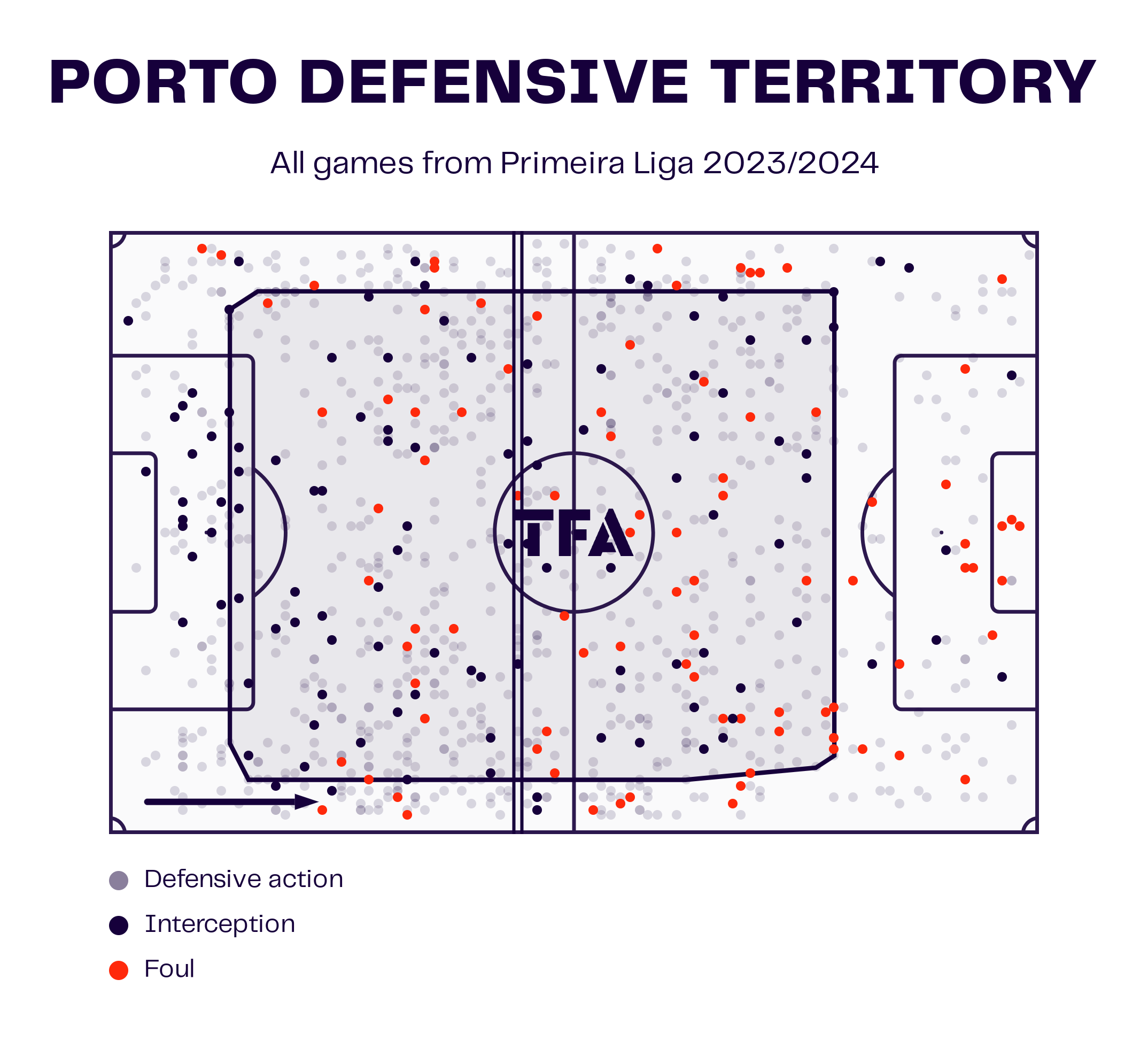
Conceição's teams are great at executing pressing traps.
One of the tactics they often use is to leave the opposition's wide defenders unmarked while the ball is in the other team's half.
When the ball is played wide, Porto's winger on the near side—in the half-space—puts the receiver under pressure, isolating them and potentially forcing turnovers in dangerous areas.
When the opposition plays a low block, Conceição's sides use a careful counter-pressing structure (3+2) to get the ball back quickly while making sure they're not leaving themselves too exposed.
By looking at how the other team moves the ball around, Conceição's teams can set traps to get the ball back in dangerous areas.
For example, if full-backs aren't marked when they build up play, they might make risky passes, which are then aggressively contested.
The way they change the press based on the situation means they don't waste energy chasing after the ball, but they still play solidly in defence.
FC Porto High Regains Map 2023/24
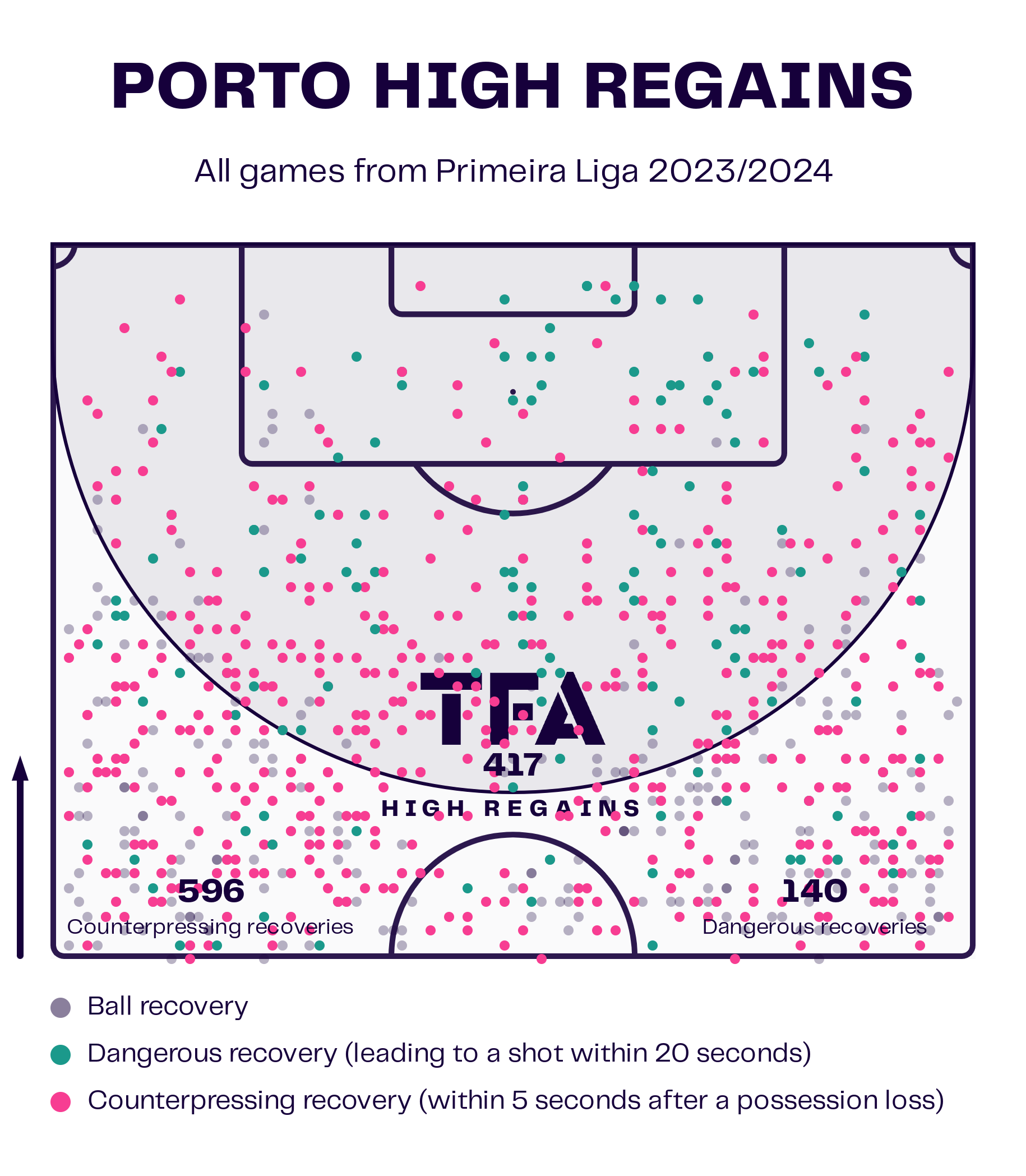
In-Possession Strategies
Conceição's attacking style is all about being quick, adapting to the game, and flexible.
His Porto teams often tried to take advantage of the opposition's disorganisation straight away after they got the ball back.
You could always count on the fast transition from defence to attack, often trying to release forwards like Mehdi Taremi and Evanilson into spaces behind the defensive line.
By moving quickly, they catch opponents off guard, increasing their chances of creating opportunities.
This approach works really well with quick, mobile attackers and full-backs like Rafael Leão and Theo Hernández, who are great at exploiting open spaces.
FC Porto Progressive Passes Map 2023/24
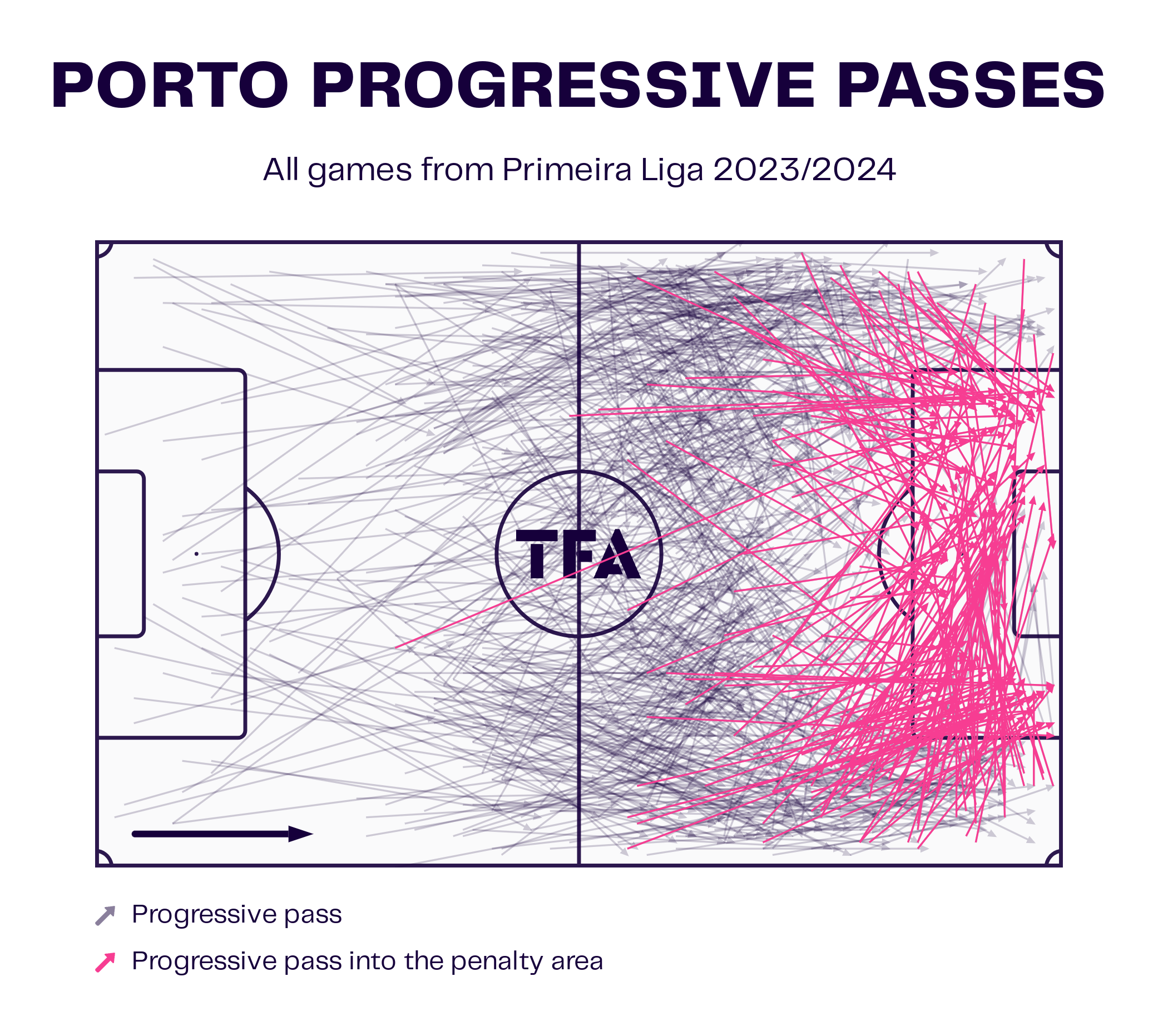
Conceição tactics used a combination of structure and flexibility when facing deep-lying defences, usually choosing a 3-2-5 or 2-3-5 attacking formation.
In these scenarios, the full-backs would advance aggressively, forming part of the attacking quintet, while the centre-backs and a defensive midfielder provided a stable platform.
Another thing he did was have players swap positions, which confused the opposition's defence.
For example, wingers might drop into midfield to create overloads, allowing full-backs or attacking midfielders to fill the vacated wide areas.
The full-backs would be advanced, stretching the opposition's defences horizontally and creating chances for the central attackers to cross the ball or create openings for them.
Crossing was a really important part of Porto's attacking play under Sérgio Conceição coaching style.
The team's strong and tall forwards made it possible to use a strategy that relied heavily on high crosses and moves from the wings.
But these crosses were often timed really well after Porto had stretched the opposition with wide overloads and quick passing combinations.
Using the wings so much forces the other team's defence to cover more ground, creating gaps for the central attackers.
Conceição focuses on getting the crosses right, often going for cutbacks from dangerous areas instead of just hoping for something to stick, which makes the chances better.
FC Porto Crossing Zones Map 2023/24
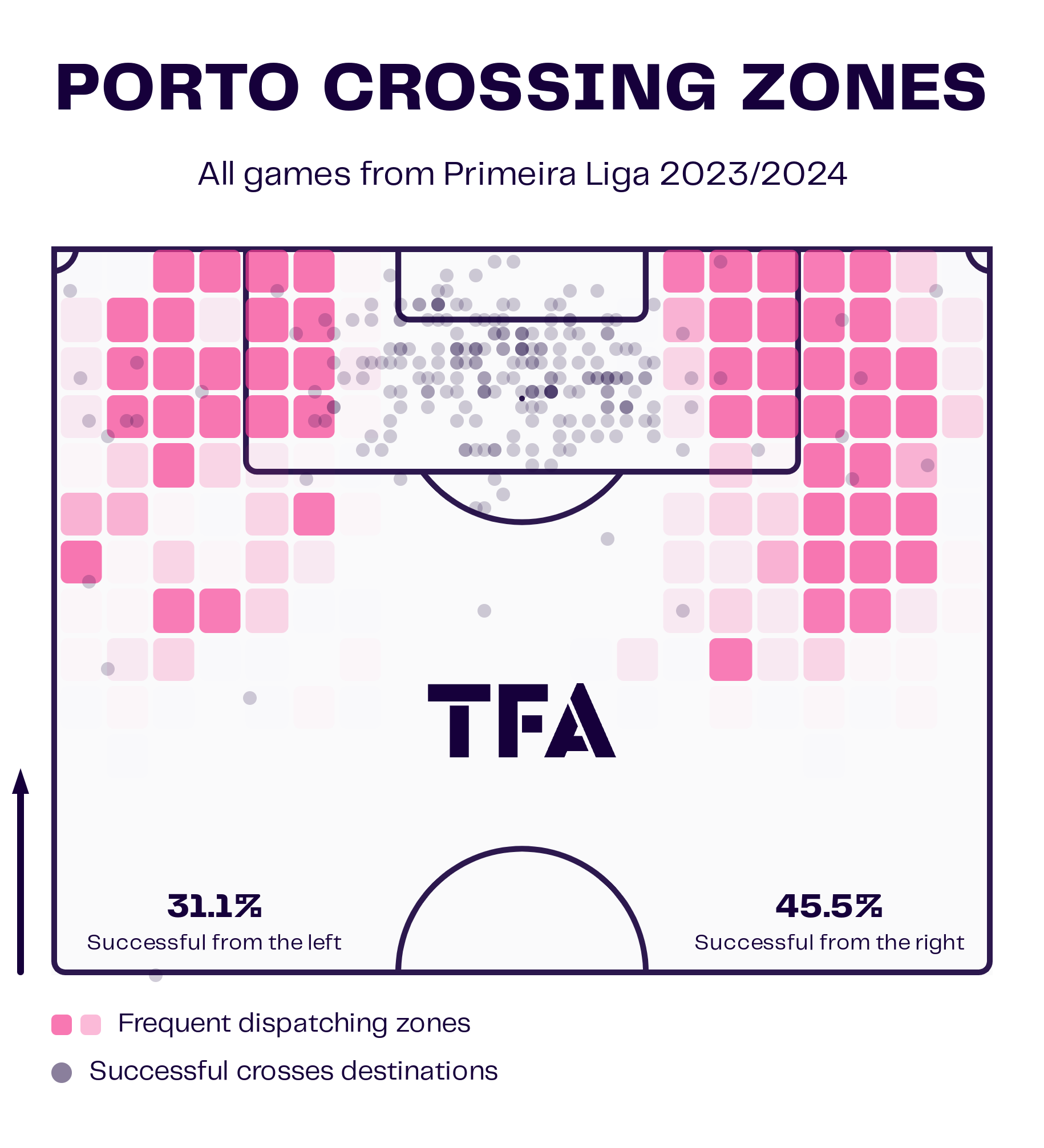
The way they set up play also varied depending on how intense the opposition's press was.
When the opposition was on the ball, Porto often used a 3+2 build-up structure, with the goalkeeper playing like a centre-back.
This made it easy to pass the ball out wide, creating space in the middle or advanced areas.
Third-man runs and quick one-touch combinations were often used to get around the press, showing that Conceição values technical precision and spatial awareness.
The 3+2 build-up structure invites the press, creating space to exploit in more advanced zones once the press is bypassed.
The build-up can also shift easily enough to handle different levels of opposition intensity, showing how tactical it is.
Comparison With Fonseca & Pioli
Sérgio Conceição and Paulo Fonseca have very different ideas about football.
Fonseca's teams were all about owning the ball, doing super-complex passes, and having all the players in the right positions.
His approach was to control games by being technically better than the other team.
Conceição, on the other hand, is more down-to-earth and focuses on adapting to the game and exploiting weaknesses in the opposition.
While Fonseca tries to force his style on his players no matter who they are, Conceição adjusts his tactics to deal with the opposition.
Interestingly, his style is quite similar to that of the 2021/22 Milan side managed by Stefano Pioli, particularly in terms of direct transitions and wide attacking play.
Players like Rafael Leão and Theo Hernández, who are well known for their explosiveness and ability to thrive in open spaces, are likely to do really well under Conceição.
However, unlike Pioli, Conceição focuses more on defensive solidity and organised pressure, which could help fix Milan's weaknesses when switching from defence to attack.
Statistics show that Porto often led the league in attacking metrics, like goals scored and chances created, under Conceição, showing his effective approach.
FC Porto Shots Map 2023/24
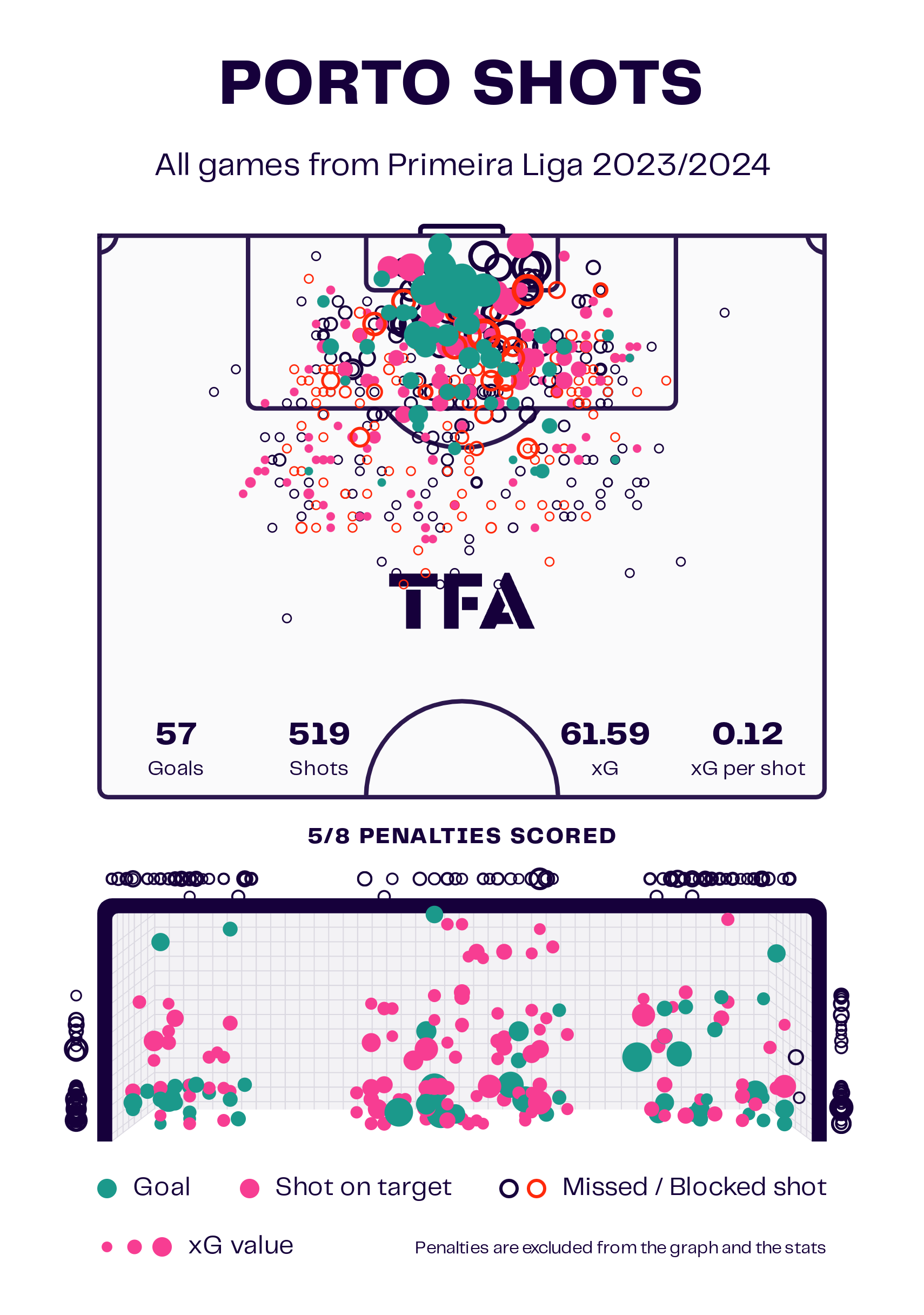
Sérgio Conceição has a Milan squad with a lot of potential, but they need to be tweaked a bit to fit with his coaching style.
Players like Rafael Leão, Theo Hernández, and Ruben Loftus-Cheek are great at dribbling and moving around freely, which is exactly what Conceição wants.
This means they can make quick changes and do some really exciting attacking moves.
But defensively, Milan will have to be more disciplined and switched on when they transition to Conceição's compact zonal system, particularly when it comes to maintaining narrow defensive lines and executing pressing traps.
Conclusion
Sérgio Conceição's new gig at AC Milan is a whole new ball game for the Rossoneri, mixing solid planning with an attacking style that's made him a big name at Porto.
He's all about adaptability, solid defence and quick attacking transitions, which is a far cry from Paulo Fonseca's possession-based style.
The players will have to get used to his organised but flexible approach, but his track record suggests he can get the most out of his team and get Milan back on its top footing in Serie A and Europe.

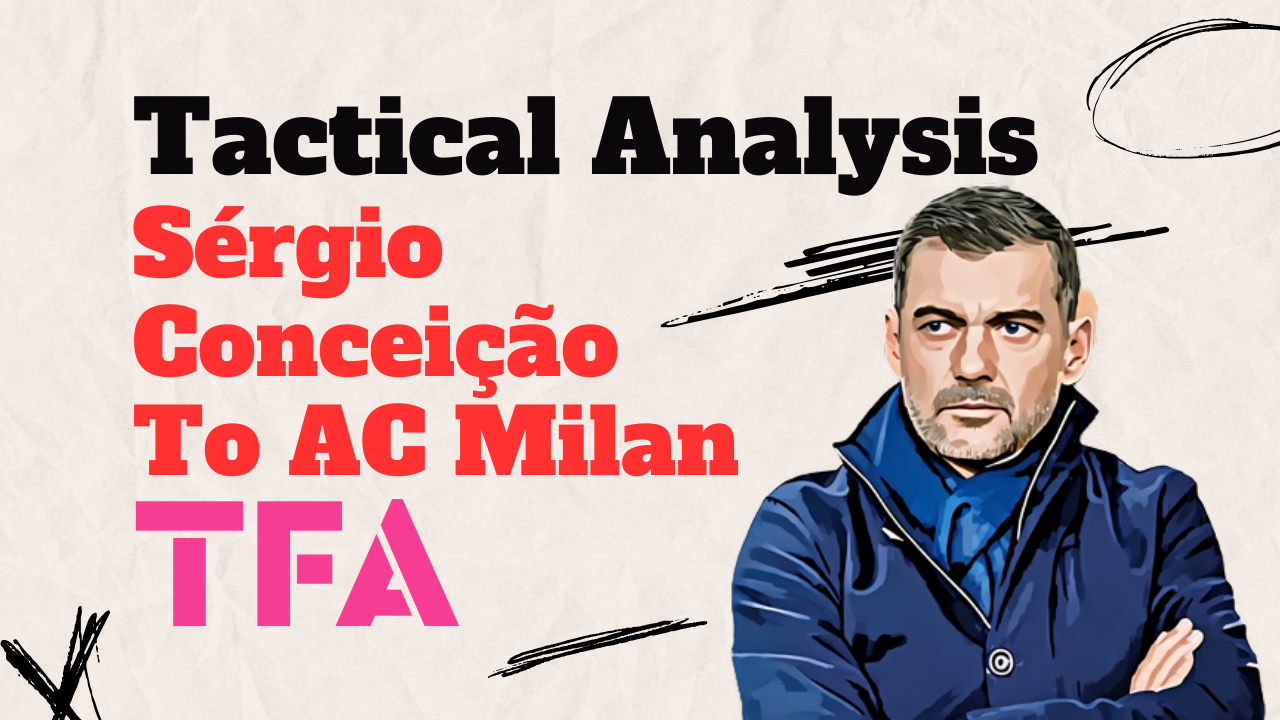



Comments